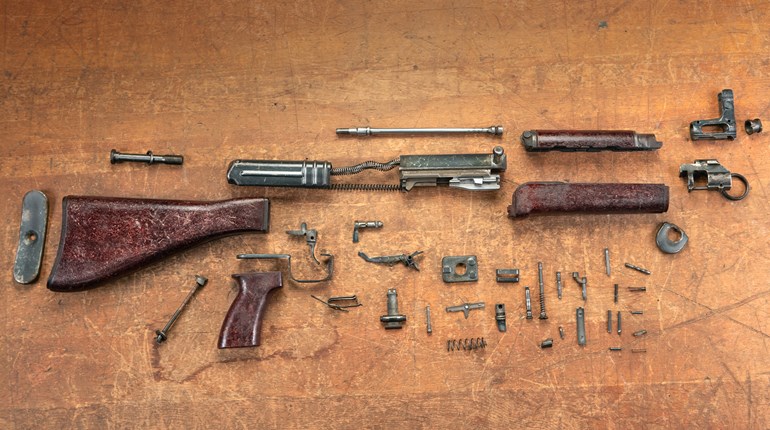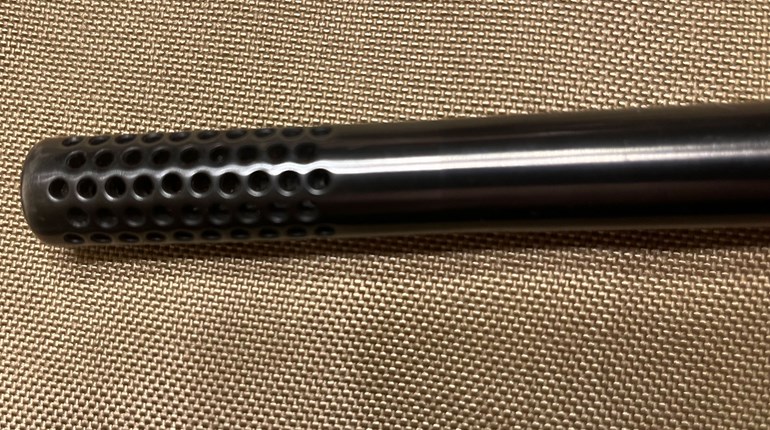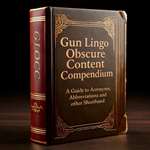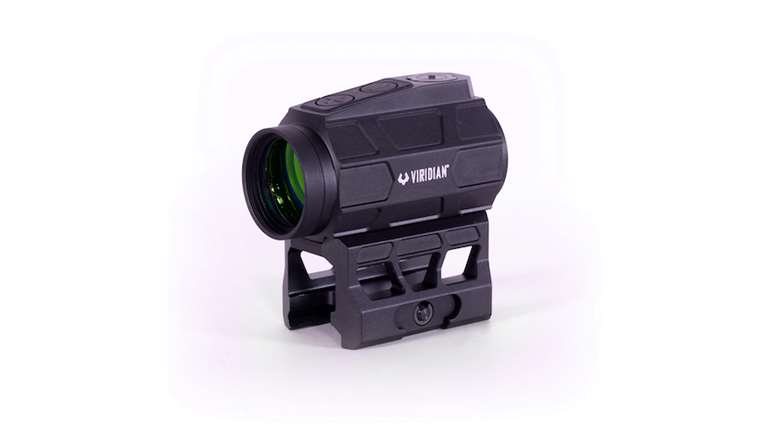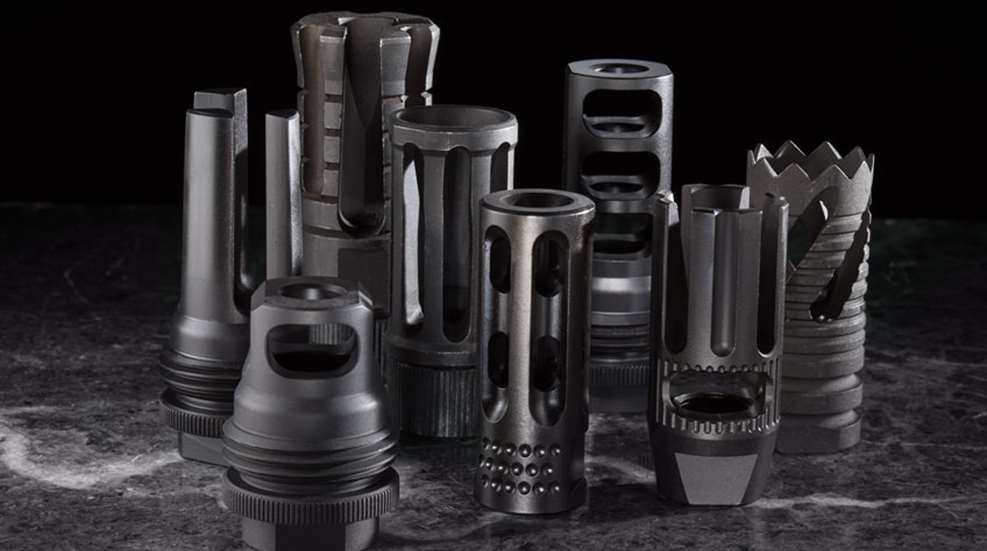
The question of which muzzle device is best for a given rifle comes up quite frequently in conjunction with my gun work. Understanding the basic differences between types of muzzle devices and how they work for or against your needs should simplify the process of choosing the right one.
Muzzle modularity is a relatively recent development in firearm evolution. Devices like the Cutts Compensator (Thompson submachine gun and Browning Automatic Rifle), conical flash hider (M1C and M1D Garands) and simple, angular cut muzzles (AK-47) were incorporated on early and mid-20th-century arms. However, it was not until the latter-half of the century that militaries around the world began standardizing muzzle treatments on their main fighting rifles and carbines.
The commercial market followed suit on its semi-automatic firearms. A bare muzzle places the fairly delicate crown at risk of damage. This transitional point where the bore’s rifling ends and free bullet flight begins is important to accuracy. In cases of extreme damage, it can also affect bullet stability and integrity. A machined recess, or field crown, provides some protection, but an actual muzzle device goes much further. Our main options come in the form of flash hiders, muzzle brakes and combination units.
Flash Hiders (aka Flash Suppressors)
Two categories encompass most flash-hider designs: prong and cage. The former typically have forward protrusions, which remain open at their ends. Prong-types are excellent flash managers, with longer tines being most effective. Unfortunately, as many ground-pounders have learned the hard way, prong-style flash hiders have a tendency to grab vegetation in thick brush. A secondary aggravation is that many of them produce a tuning-fork effect each time the rifle is fired. Some are worse than others and many shooters are not bothered by the noise at all, but it is noticeable with longer-tine models in particular.
Cage-style flash hiders can either be enclosed and smooth at the forward end or have small teeth for striking. These devices suppress flash by redirecting/dissipating/cooling through radial, longitudinal venting. Cage-style devices do not ring when fired and also permit easier movement through heavy vegetation. However, they typically do not reduce flash as well as prong-types. Regardless of which type of flash hider is used, aside from the benefit of a few ounces of steel on the muzzle, their designs do not reduce muzzle movement or perceived recoil.
Muzzle Brakes (aka Compensators)
Taming the effects of a recoiling rifle is where muzzle brakes shine. These muzzle treatments come in several configurations, including side-ported, top-ported, side-and-top-ported, fully ported and finally, adjustable. Well-designed brakes reduce a muzzle’s tendency to “climb” in recoil, while reducing and redirecting the force into a more straight-line impulse. For ease of accurate shooting and speed of recovery for follow-up shots, muzzle brakes are hard to beat.
Good examples include the SureFire ProComp, JP Rifles’ 3-Port Compensator and the simple, inexpensive Miculek Compensator. But, as with all other deals, brakes have some less-desirable characteristics. Side-ported models are notorious for blasting everything left and right of the shooter with a loud and physically perceptible concussion. The problem is significant enough that some ranges and even entire competition series prohibit muzzle brakes altogether. These devices also tend to produce significant visual signatures. Muzzle flash is excessive, and anything near the brake—sand, dirt, small woodland creatures—will be disturbed. These issues pose significant problems in defensive or tactical situations.
Combination Units
As one would expect, this final category incorporates pieces of both flash hiders and muzzle brakes into a single device. Combos do neither job perfectly, but they do reduce the negatives of each of the other main muzzle-device types. Designs vary widely by manufacturer, but they typically have some form of top porting, a solid bottom and oftentimes either small or partial prongs on the front ends. Examples for non-suppressed use include Yankee Hill Machine’s Phantom 5C2 and the simple “A2”- style flash hider/comp made popular by the M16A2. On the QD suppressor side of the house, SureFire’s WarComp (in both open- and closed-tine configurations) is particularly popular and effective.
Odds & Ends
Thread protectors are also available for shooters who need neither flash nor blast reduction. Typically consisting of a knurled or textured thin steel ring, thread protectors do exactly as their name implies, and not much else. However, if you select one that is a bit longer than the threaded section of your rifle’s muzzle, the overhanging portion of the thread protector can provide additional protection for your barrel’s crown. Since flash hiders and muzzle brakes add length to a rifle’s barrel, the thread protector provides an option to protect the threads and crown while keeping barrel length from growing.
Deciding which muzzle device best meets your needs comes down to how you use the rifle. If it is primarily a home-defense gun in a light-recoiling caliber, a pure flash hider makes a lot of sense. If you are solely focused on split times and ease of follow-through for competitive shooting, a brake will serve you well.
If you fall somewhere in the middle—needing some recoil reduction and flash suppression for a variety of pursuits—one of the many combination units is worth a hard look. The cost to change from one device to another can range anywhere from $10 to $175. Most good-quality units fall in the $30 to $75 range, so tailoring your rifle to specific needs will not require you to skimp on a bunch of meals or training ammunition.












